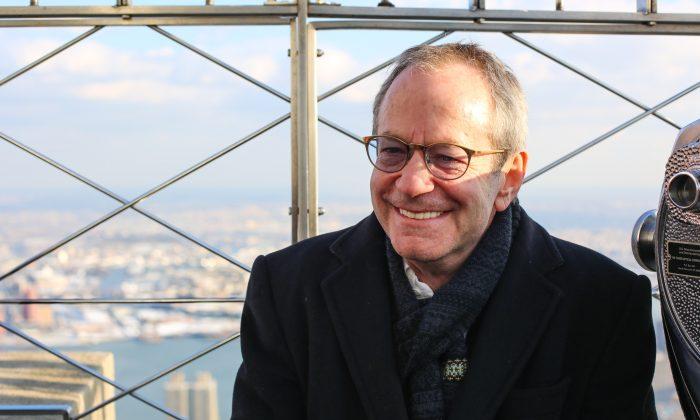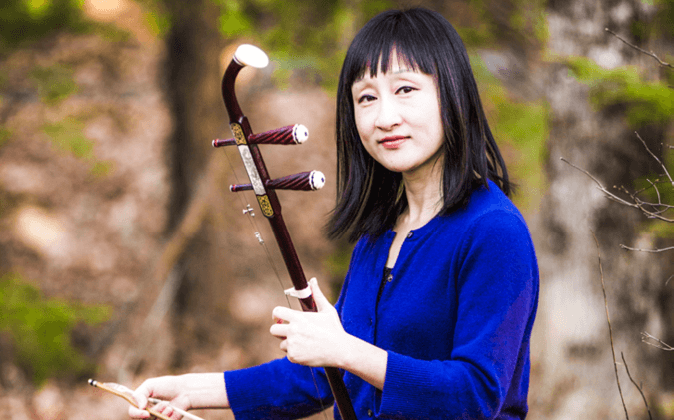NEW YORK—Even iconic landmarks like the Empire State Building must keep up with the times, and that is precisely Marc Brickman’s job.
For decades Brickman did lighting design for Pink Floyd concerts, starting with the 1979 album “The Wall.” He also lit up international events such as the Olympics in Spain and in Japan.
But in 2012, he found himself at a job he had never done before: enhancing the lights of the Empire State Building.
“This was a really unusual job,” said Brickman, 60. “It brought my sensibility of a show to a piece of architecture.”
The Empire State Building is a legend in and of itself, but it is still challenged to sustain its reputation. In a time when the One World Trade Center trumps its place as the tallest building in a city with increasingly brighter lights and billboards, Brickman brings state-of-the-art lighting technology to the Empire State Building.
But he doesn’t do it alone.
He works closely with Anthony Malkin, CEO of Empire State Realty Trust.
“Mr. Malkin is a force to be reckoned with,” Brickman said. “He has an incredible vision for the building to keep it ongoing and modern.”
“It’s like they built this amazing racecar and they asked me to drive it,” he said.
In 2012, the Empire State Building transferred from the old lighting system to an advanced LED lighting system. Brickman designed it to use 11,500 pixel mapped DMX channels.
The pixel mapping can fit video images in the lights.
“On Christmas, you can see little snowmen and little bells dancing. We’ve turned the light into low resolution images,” Brickman said.
The transition from the old LED lighting system fixtures was a difficult process that few New Yorkers were aware of.
Empire State Lights, the Transition to Modernity
The building has been lit since 1964.
Up until 2012, it was lit with metal halide lamps and floodlights, which required roughly a dozen men to “run around” and manually put plastic gels over the lights in order to change their colors.
“Energy inefficient is the best way to describe that,” Brickman said. “No one knew how much effort it took to change the lights.”
When the changeover from halide to LED lighting happened, nobody noticed—and that was a good thing.
The Empire State Building lights simply could not shut down for six months, as a normal construction project would require.
The new lights were lit at 20 percent in order to match the brightness of the old lights.
“No one in New York City knew about the transition until that night,” he said.
Brickman watched from a nearby building as the new lights were brightened to their full luminosity.
“There’s no other building in the world that does these light shows, and it’s a gift to the city—the expense, time, in this day and age—it’s an amazing gesture,” he said.
The LED fixtures increased The Empire State Building’s lighting options from 9 to over 16 million colors.
On Nov. 6, 2012, CNN used the top of the Empire State Building as a scoreboard for the 2012 United States presidential election.
Later that month, the building held its first synchronized light show, with a live performance by Alicia Keys in a nearby building. Her performance was heard on the radio as New Yorkers watched the lights from their windows.
Brickman was involved in the choreography of the lights, from selecting the music to cuing.
On Halloween, the building added 200 feet of extra lighting to its antenna.
“When that lit up and we all looked at it, it was beyond anything than we’d ever thought,” Brickman said.
Each lighting show is a nerve-racking experience. There are no trial runs. The first time that Brickman sees the lights is the first time New Yorkers see the lights. “I love the challenge, it keeps you on your toes,” he said.
“The antenna completed the architectural picture of the building, it was the final statement,” he said. “It was all in white and just other-worldly.”
“I hope to keep exploring our designs on a daily basis. We have the capability of affecting not just the colors of lighting, but also its movement,” he said. “It’s a beacon in the New York skyline.”
Inspiration From the Audience
Brickman grew up in Northeast Philadelphia. His father was a salesman, his mother a homemaker.
Growing up, he had no idea he would be interested in lighting one day.
“I didn’t know what I wanted to be, that was the problem,” he recalled.
At age 16, he fell into a gig lighting concerts for local bands. That evolved to doing lighting design for rock legend—Bruce Springsteen.
“It was the encouragement I got from the audience that kept me going,” he said.
Brickman said he gets inspiration from paintings, but nothing is comparable to feedback from the audience.
“Sometimes, it’s even as simple as talking to a cab driver,” he said. “They’ll say something they liked. And it feels great because you do this for the audience, you always design for the audience.”
“I’m very lucky to be where I am today,” he said. “I think I got here by being honest.”
“I think you just have to be honest everyday,” he said. “It’s a difficult thing to do, but I don’t know any other way to be.”





